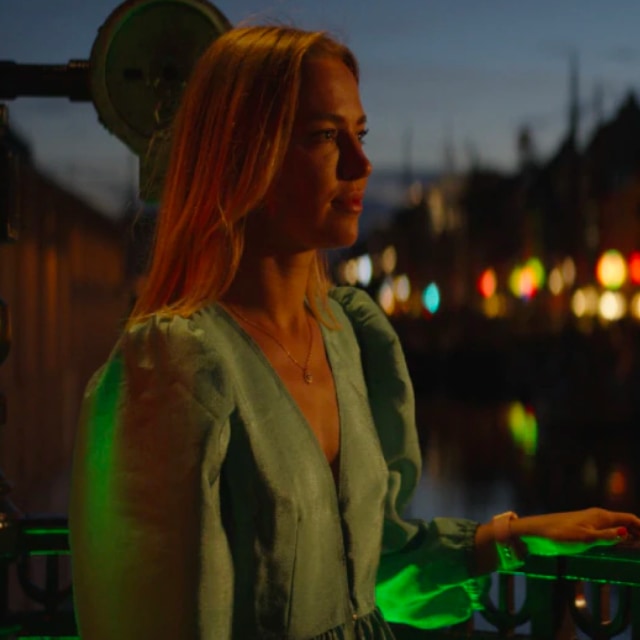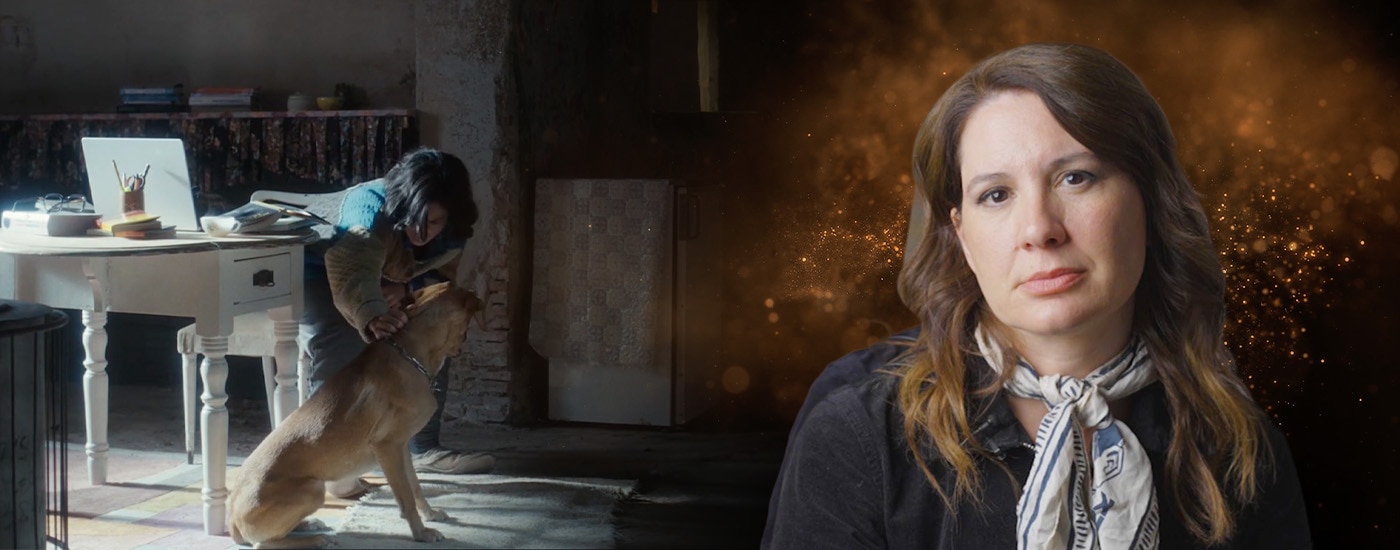
Scene Deconstruction with Bet Rourich, AEC
Un Amor, directed by Isabel Coixet, is a critically acclaimed movie nominated for seven Goya awards including best cinematography and winner of Gaudi and CINELIBRI for best adapted screenplay. It’s based on a best-selling novel of the same name by Sara Mesa and chosen by “El PaÍs” as Spain’s 2020 Book of the Year. The plot follows a young woman, Nat, who moves to a small countryside town to start anew and becomes drawn into a complicated, provocative relationship with a fellow villager called Andreas.
Originally from Barcelona, cinematographer Bet Rourich, AEC is known for her work across film, documentaries, advertising and music videos. For Un Amor, Bet chose to shoot with Sony VENICE in 4:3 and in this deconstruction she details many of the techniques used in the making of the film.
Scene Deconstruction: Key Insights
- Color can be used to change the way an audience relates to a scene. Cool or green tones may can portray a sense of unease while warmer tones may feel more welcoming.
- “Free Lensing” which allows the lens to be moved relative to the camera’s sensor is a technique that allows the cinematographer to selectively defocus or introduce distortions to different parts of the image.
- Frames within frames is the use of frames formed by objects within the scene such as a window, curtains or a door to create a smaller, more constrained frame for the actors or action within the full image.
Fixing Leaks Scene
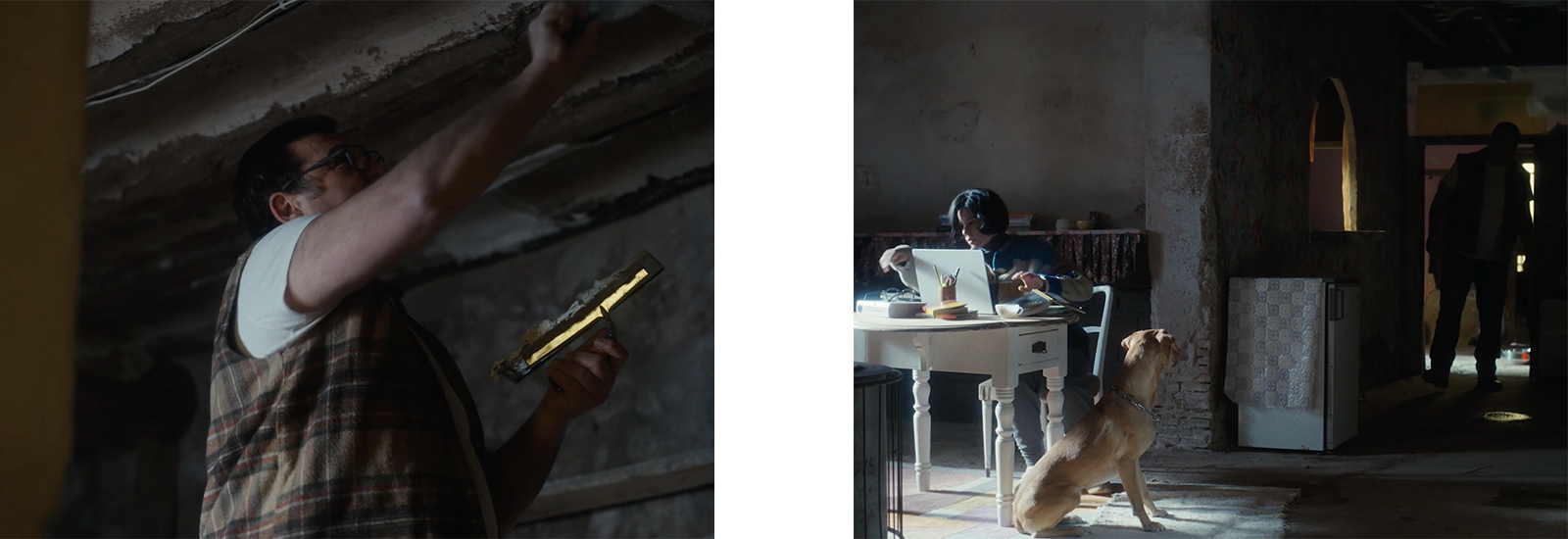
In this scene, as part of the agreement reached between them, neighbor Andreas comes to Nat’s home to fix her leaking roof. For this scene Bet wanted to create a sense of unease, to create an uncomfortable look. To help achieve this she chose to create a mostly cold look. She also included areas of warm light, the smaller warm areas contrasting against and increasing the impact of the larger cool areas.
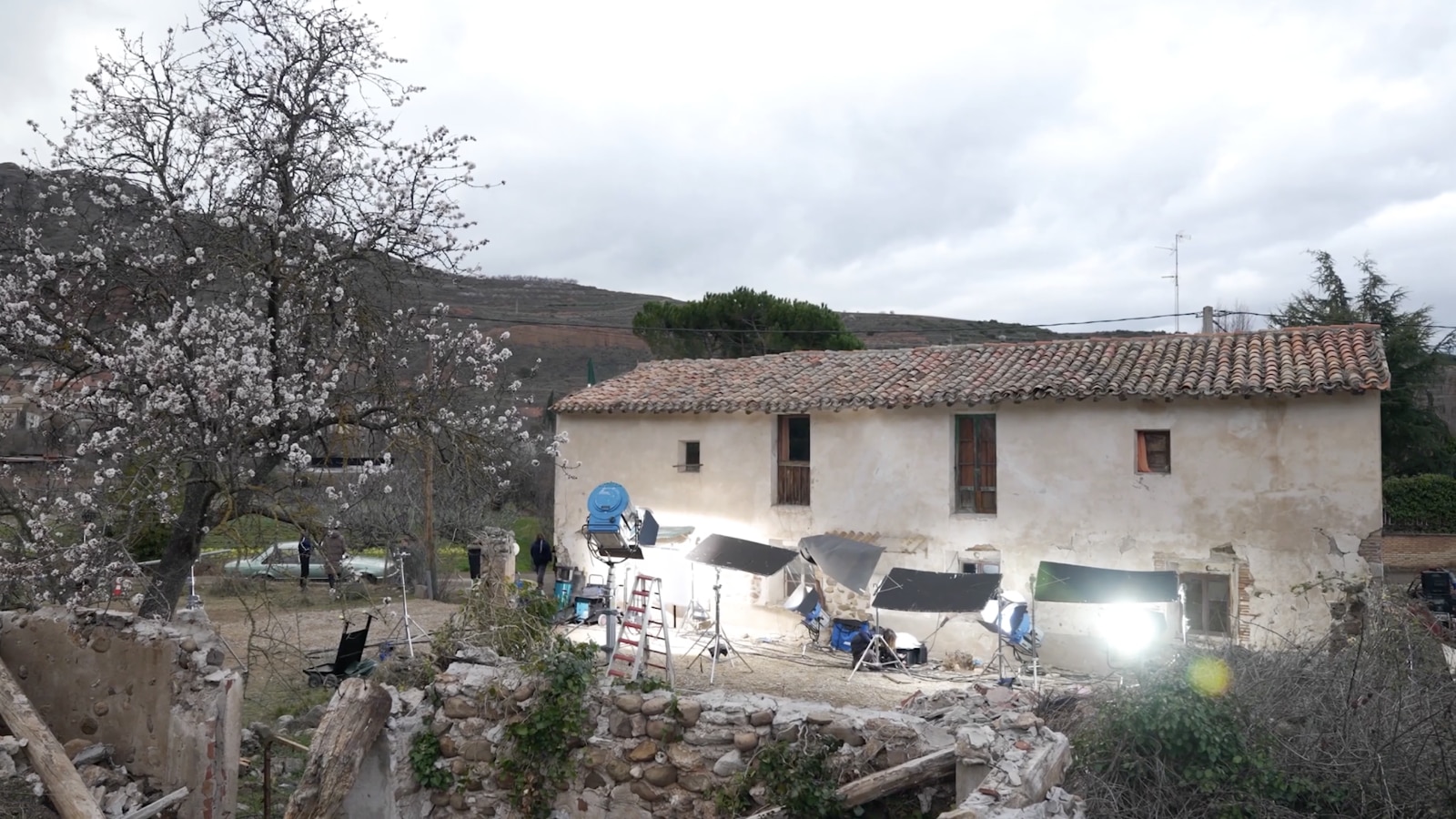
To create this look she used two M40 HMIs outside the house, bounced off large reflectors, then aimed through the living room windows. An Arrimax light was used to illuminate the area around the front door to control the contrast and light levels whenever the door was opened.
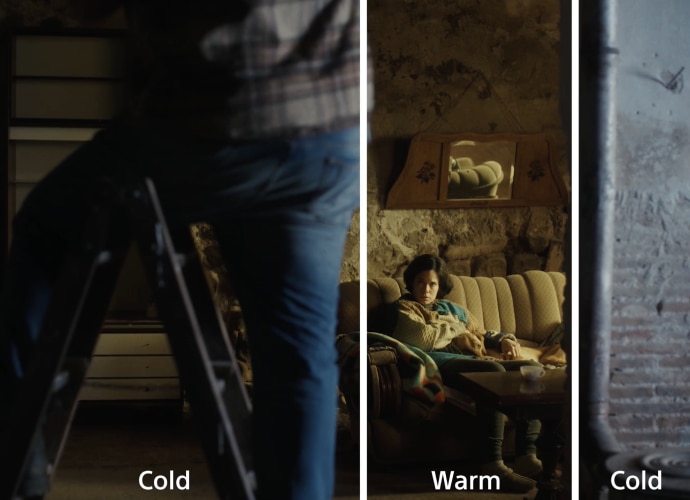
These exterior HMI lights provided the cool color temperature light coming through the windows, lighting large parts of the interior. Warmer lighting fixtures in the kitchen, or near the living room sofa, provided the sense of a safe place within Nat’s home.
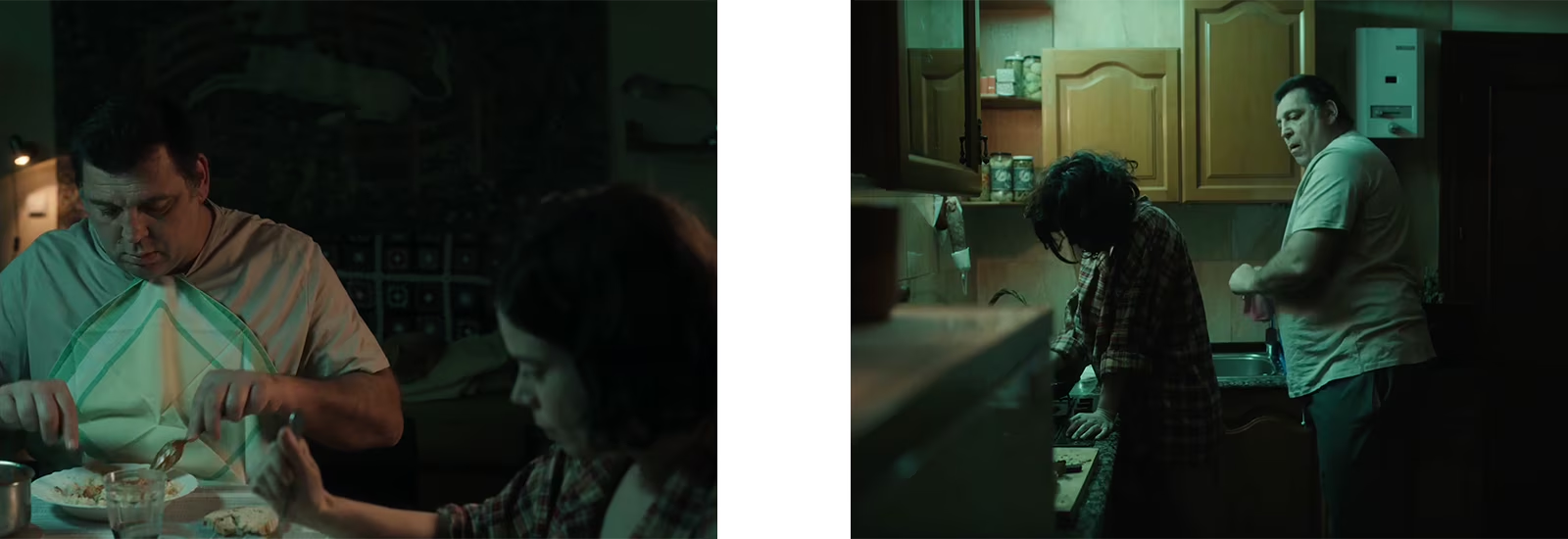
As the scene was shot in a real house rather than a set, Bet was unable to use large or high lighting fixtures, so practical lights within the scene played an important role in the lighting plan. Bet chose practical lights that would create distinct pools or shafts of light. By choosing the right lamp shade, or moving the light to different positions, she could control the shape and intensity of the light creating visually interesting pools of light on walls or within the scene.
“That’s a good thing with the Sony camera, you can use practical lights as a main light source,” Bet says.
Montage of Memories Scene
This is one of Bet’s favorite parts of the film. It is a montage of memories that are haunting Nat, echoing her obsession with Andreas which increases as time goes by.
To create a different look for these parts of the film, Bet took advantage of the shallow depth of field that can be created when using the VENICE cameras’ full frame sensor when shooting the many close-up shots of Nat.
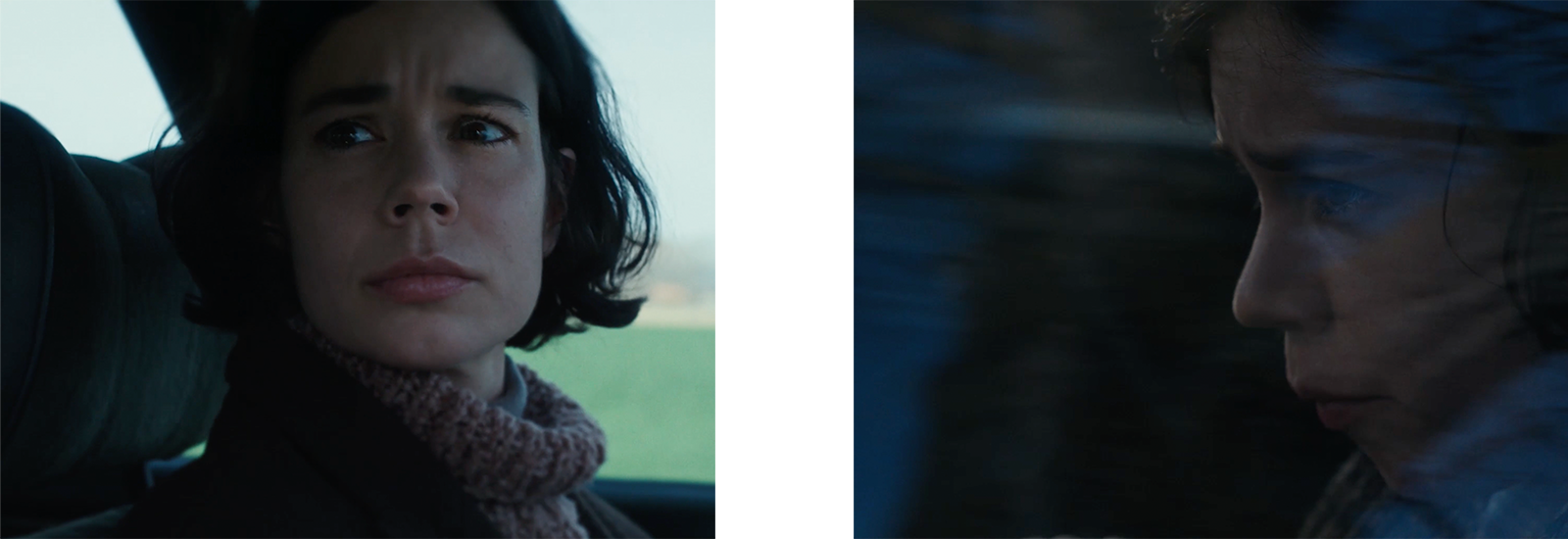
In addition, Bet used a technique called “free lensing” where an adapter that allows the lens to be tilted or shifted relative to the camera’s sensor is used to alter the focal plane. This allows you to selectively defocus or introduce distortions into different parts of the image.

As well as these optical techniques, Bet made use of frames within frames. Using things such as a car windscreen, windows or curtains within the shot to frame the actors or action in a smaller frame within the main frame. These smaller frames created a more constrained or claustrophobic feel to the shot.
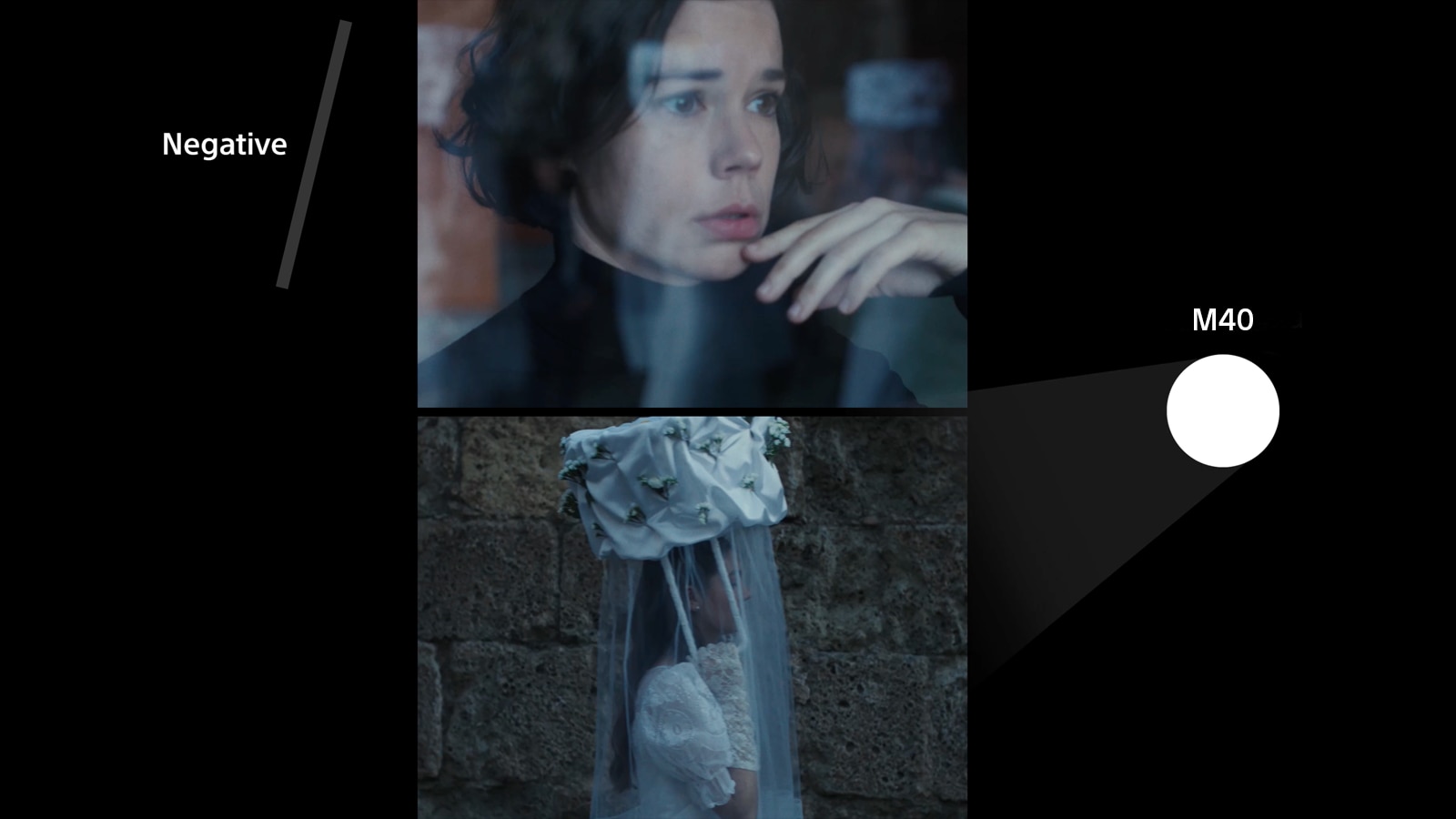
The scene includes a religious parade where Nat watches young women being led by a man. This is a reflection of Nat’s own life, led by men. In the shot we see Nat sitting in a window and the parade reflected in the glass of that window.
To create this effect, Bet used negative fill to ensure the interior of the car was very dark, and then brightly lit the parade with an Arrimax light to ensure a strong refection in the window.
The Dog Scene
Nat’s dog has bitten the neighbor’s girl and as a result Nat is forced to give the dog away. The dog is Nat’s best friend, so this is a very difficult moment for Nat. For a very dramatic look Bet wanted to have extreme levels of contrast.
Bet used a warm light that might perhaps appear friendly, but the extreme contrast makes the scene feel uncomfortable. To achieve this look, Bet decided to shoot the scene in silhouette with the warm, hard light reminiscent of the setting sun. By the time they shot this scene, Bet had been using the VENICE camera for four weeks, so she felt confident in the way it would behave with such extreme lighting and contrast.
Bet used a 2K Fresnel light outside the only window in the scene with the camera directly facing the window. The light was carefully positioned so that it would introduce a strong flare into the otherwise mostly dark shots.
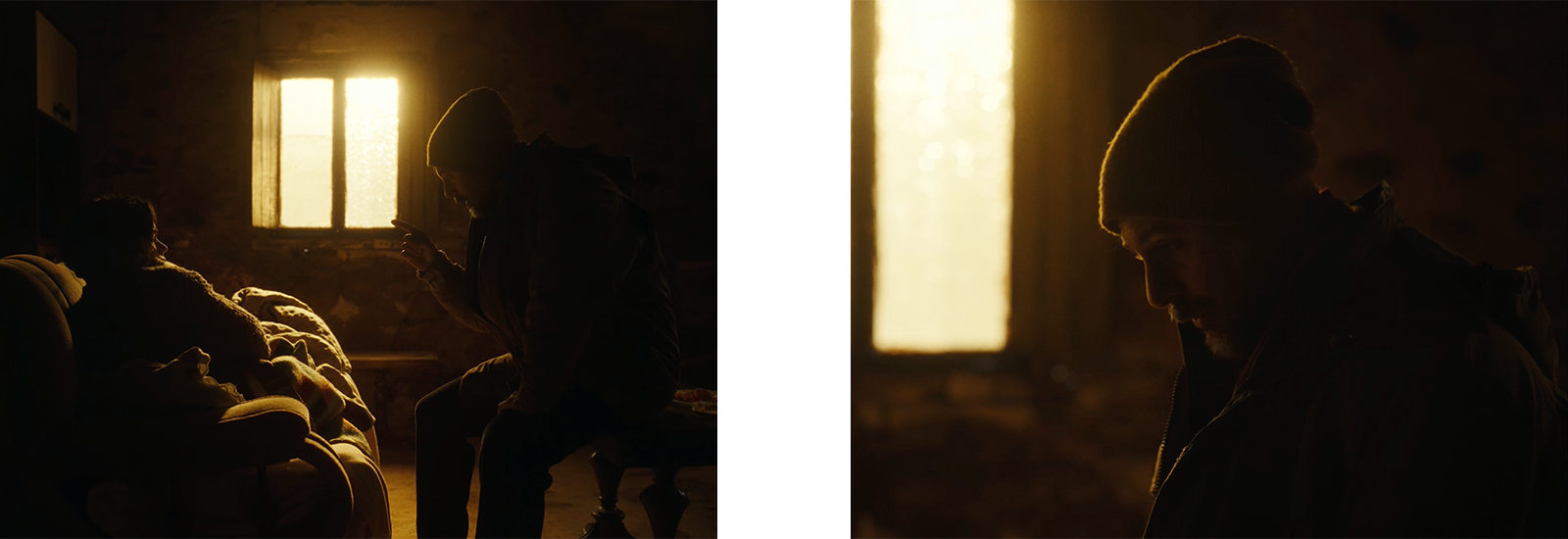
Bet used a reflector on the left of the shot to bounce warm back light from the Fresnel into the scene. A Skypanel with a chimera was used on the right of the shot to add a small amount of fill on Nat. The end result is an intense warm light flooding through the small window into a mostly dark frame with just enough shadow detail to see what is happening.
“I knew that the camera would deliver enough shadow details if I pushed it this way,” Bet comments.
Andreas House Scene
This scene explores the unhappiness Nat has with her routine and the relationship with her boyfriend. To help create an uncomfortable atmosphere, Bet shifted the lighting color palette towards green. To achieve this look, she used a combination of Astera tube lights and a Skypanel with chimera set to output light with a clinical green hue. This green hue falling on the actors and foreground contrasts against small pools of warm light from small tungsten practical lights on or close to the walls in the background.
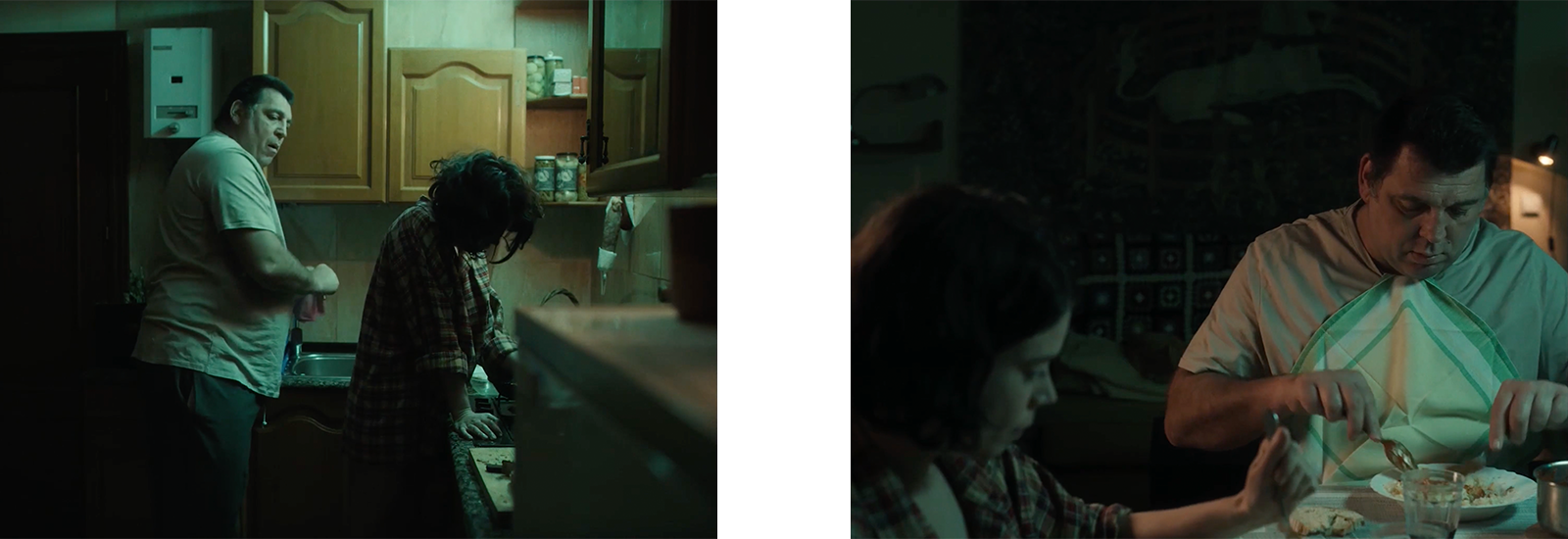
As the scene was shot in a real house rather than a set, Bet was unable to use large or high lighting fixtures, so practical lights within the scene played an important role in the lighting plan. Bet chose practical lights that would create distinct pools or shafts of light. By choosing the right lamp shade, or moving the light to different positions, she could control the shape and intensity of the light creating visually interesting pools of light on walls or within the scene.






